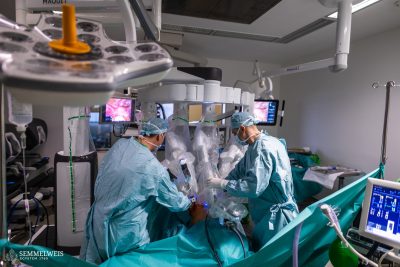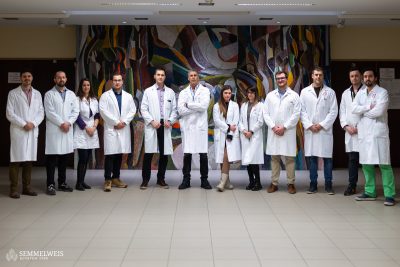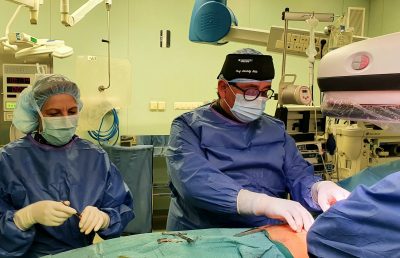The research team of Eötvös Loránd University (ELTE), Semmelweis University’s Department of Genetics, Cell and Immunobiology and ComInnex R&D Inc. have started the development of compounds consisting of changeable components based on the type of tumor in order to achieve a more efficient targeted treatment of tumour patients with the reduction of side effects. The research, funded by the National Research, Development and Innovation Office was launched in January 2017 and is currently in the phase of device procurement and referential testing.
 “ELTE is the consortium partner leading the research and we have been in close cooperation with Dr. Gábor Mező, scientific advisor for 15 years. Our research on molecules targeting tumour cells (drug targeting) started in 2003.”, Dr. László Kőhidai, Associate Professor of the Department of Genetics, Cell and Immunobiology said.
“ELTE is the consortium partner leading the research and we have been in close cooperation with Dr. Gábor Mező, scientific advisor for 15 years. Our research on molecules targeting tumour cells (drug targeting) started in 2003.”, Dr. László Kőhidai, Associate Professor of the Department of Genetics, Cell and Immunobiology said.
Initially compounds that are able to attract tumour cells if administered locally were being researched and several molecule families were identified which now constitute the basis of the new project.
“This project’s objective is to develop drug molecules that consist of three components: besides the anti tumour component, it contains a guiding component which identifies the tumour cell and a third component that splits at the right place, releasing the compound which may exert its effect on the part of the cell that needs repair. The consortium is working to create a balanced combination of these components.”, Dr. Kőhidai explained.
As a potent drug for several types of tumour needs to be designed, the therapy’s efficiency may be increased by the development of various, target-cell specific components. Targeted therapy is different from traditional therapy in its ability to destroy only the tumour cells, leaving healthy cells intact.
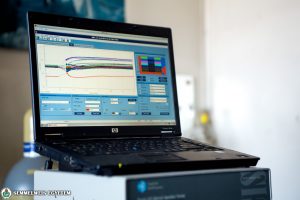 The project, funded by the National Research, Development and Innovation Office lasts three years and currently referential testing is being carried out: the already known basic molecules will form multicomponent conjugates and their effect on tumour cells will be studied in detail.
The project, funded by the National Research, Development and Innovation Office lasts three years and currently referential testing is being carried out: the already known basic molecules will form multicomponent conjugates and their effect on tumour cells will be studied in detail.
“We tried to choose diseases for our models which are the most precarious based on statistics and clinical data, such as melanomas, pancreatic and lung cancer. The project also enables us to study the quickly metastatising tumours isolated from the less aggressive types.”, Dr. László Kőhidai said.
Thanks to the project funding, Semmelweis University has already started the procurement of two modern devices: a holographic microscope and the so-called Celldiscoverer7 platform. The holographic microscope enables the analysis of cell morphology, which shows great variability in tumour cells. It is also able to track cell movement for a longer period of time, thus the process of chemotaxis, which is cell movement triggered by chemicals, can be monitored.
The Celldiscoverer7 platform was released in 2016 which is an automated system enabling live cell tracking. The device combines the systems of the microscope and the computer to apply the so-called high content imaging (HCI) in the more efficient analysis of cell physiology.
“This procurement is beneficial for the university, the department and the research group as well. Moreover, the Impedimetric Instrument Centre also profits from the project by receiving a new addition to its live imaging devices.”, Dr. Kőhidai said.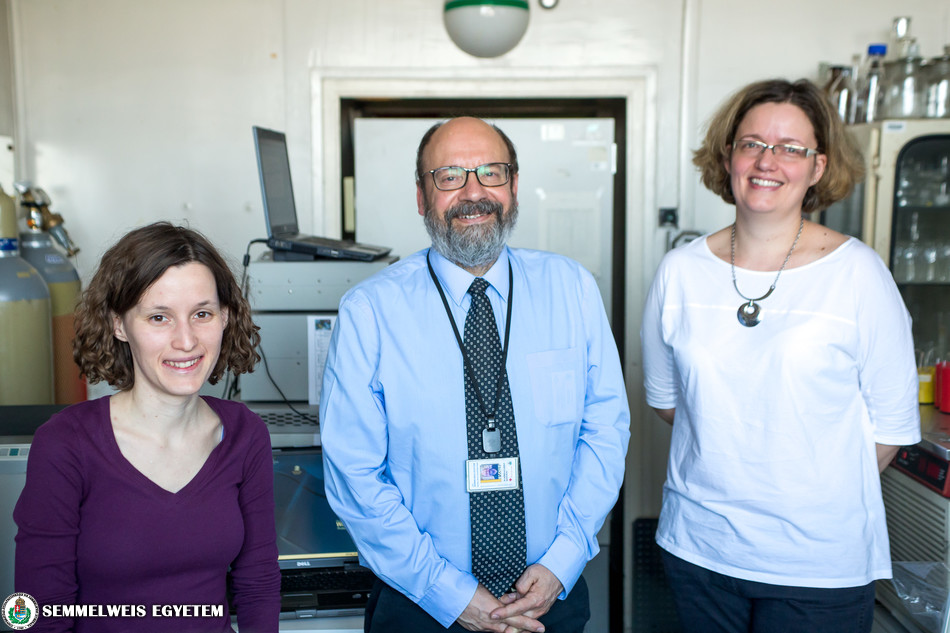
The research team consists of 15-20 members, and besides Dr. László Kőhidai, Dr. Éva Pállinger, assistant professor, Dr. Orsolya Láng, senior lecturer and Dr. Eszter Lajkó, scientific associate take part in the development drugs for targeted tumour therapy.
Eszter Keresztes
Photo: Attila Kovács – Semmelweis University
Translation: Ágnes Raubinek
